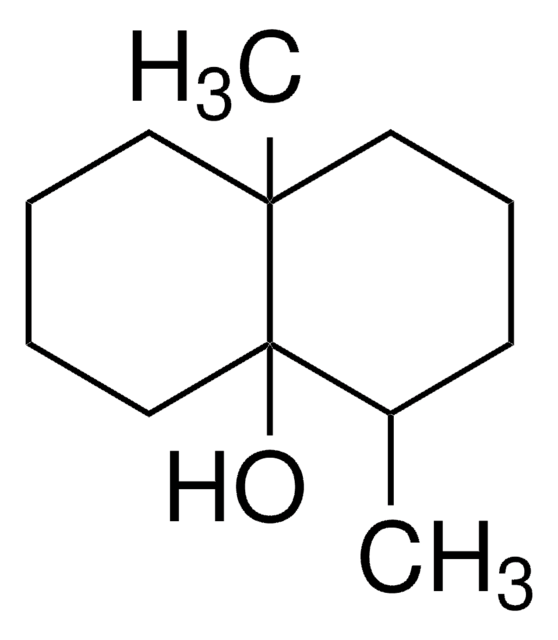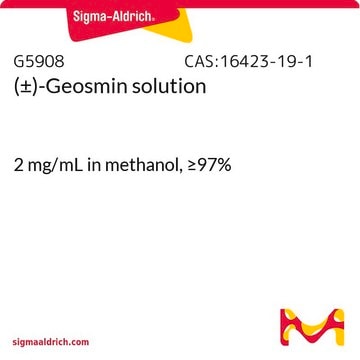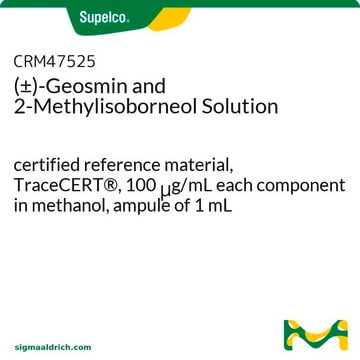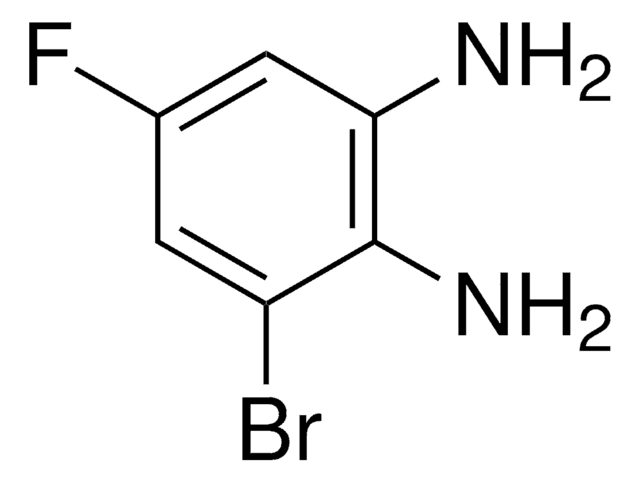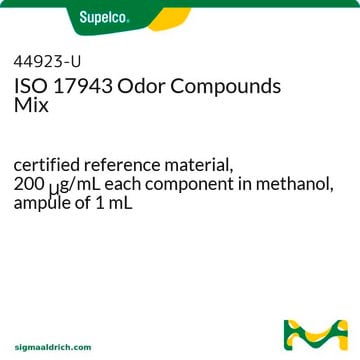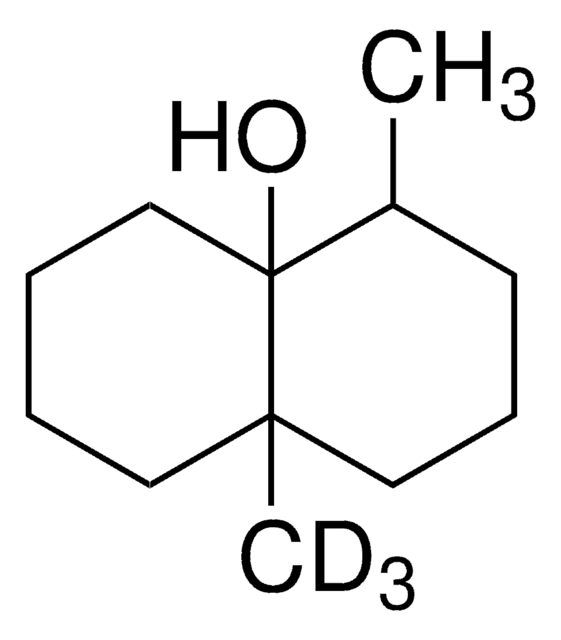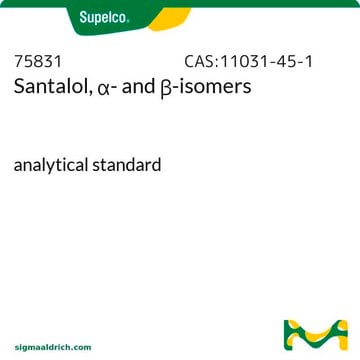743364
2-Methylisoborneol
≥98.0% (GC)
Sinonimo/i:
exo-1,2,7,7-Tetramethylbicyclo[2.2.1]heptan-2-ol
Scegli un formato
Scegli un formato
About This Item
Prodotti consigliati
Livello qualitativo
Saggio
≥98.0% (GC)
Stato
solid
Gruppo funzionale
hydroxyl
Stringa SMILE
O[C@]1([C@]2(C([C@@H](C1)CC2)(C)C)C)C
InChI
1S/C11H20O/c1-9(2)8-5-6-10(9,3)11(4,12)7-8/h8,12H,5-7H2,1-4H3/t8-,10-,11-/m1/s1
LFYXNXGVLGKVCJ-FBIMIBRVSA-N
Applicazioni
- Odor compound prioritization in water: A study employed machine learning models combined with non-target analysis to prioritize odorous compounds like 2-Methylisoborneol in surface water, enhancing the effectiveness of environmental monitoring and treatment strategies (Huang et al., 2024).
- Water treatment with carbon materials: The study explored the use of Spirulina-based carbon materials as adsorbents for removing 2-Methylisoborneol from drinking water, also assessing the cyto-genotoxic effects, thus contributing to safer and more effective water treatment solutions (Antonopoulou et al., 2024).
- Quantification in aquaculture: Improved methods for quantifying 2-Methylisoborneol in farmed fish were developed using stable isotope dilution gas chromatography-mass spectrometry, facilitating better management of water quality in aquaculture environments (Dupre et al., 2024).
Confezionamento
Avvertenze
Danger
Indicazioni di pericolo
Consigli di prudenza
Classi di pericolo
Flam. Sol. 1 - Skin Irrit. 2
Codice della classe di stoccaggio
4.1B - Flammable solid hazardous materials
Classe di pericolosità dell'acqua (WGK)
WGK 3
Punto d’infiammabilità (°F)
Not applicable
Punto d’infiammabilità (°C)
Not applicable
Scegli una delle versioni più recenti:
Possiedi già questo prodotto?
I documenti relativi ai prodotti acquistati recentemente sono disponibili nell’Archivio dei documenti.
I clienti hanno visto anche
Filtri attivi
Il team dei nostri ricercatori vanta grande esperienza in tutte le aree della ricerca quali Life Science, scienza dei materiali, sintesi chimica, cromatografia, discipline analitiche, ecc..
Contatta l'Assistenza Tecnica.